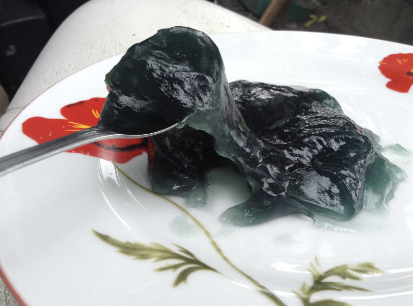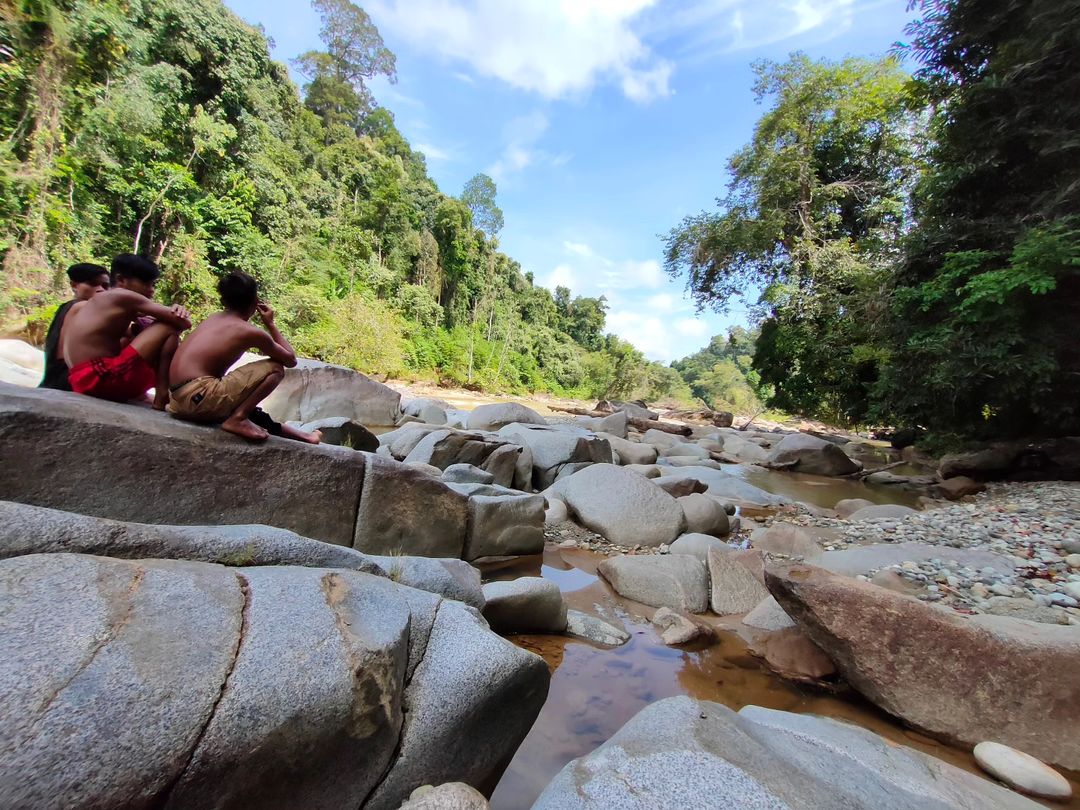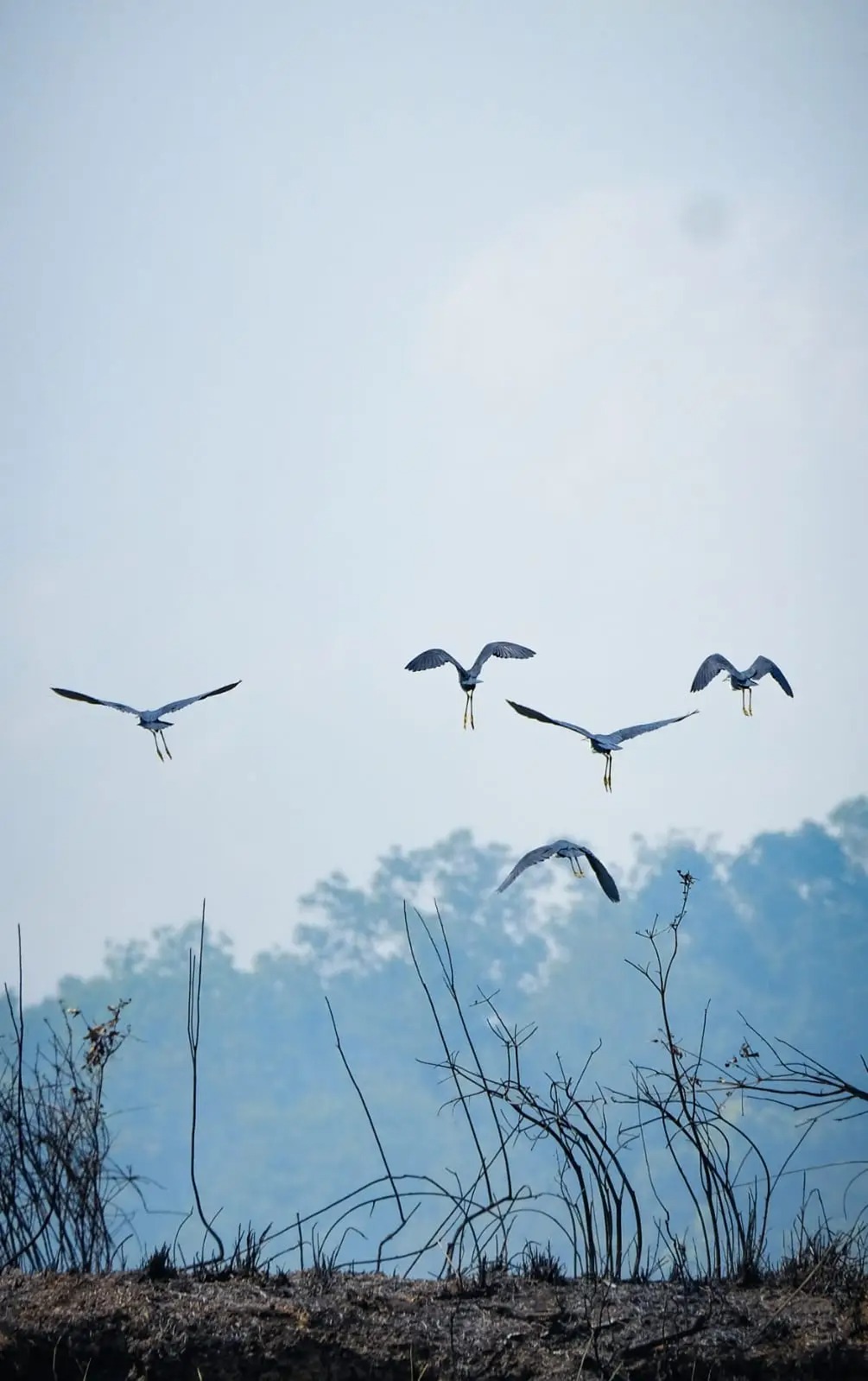07 March 2024 | By post
Papeda Biru: Innovation of Staple Food from Sago Forest
Author: Annisa Aliviani | Editor: Sastiviani Cantika
Thursday, February 29, 2024 16:31 WIB
The utilization of sago as a traditional food ingredient has long been known to the Indonesian people, especially for people in sago-producing areas, such as people in the sago forest area of Papua Province, which covers 4,769,548 ha. The mentioned of Sago Forest is a categorization for most sago areas in Indonesia, namely sago plants that grow naturally without or are limited by intensive human intervention.
Sago is a highly valued plant, especially for indigenous communities. This privilege is fulfilled in the procession of harvesting sago by holding a special ceremony as gratitude and respect for the abundant sago harvest so that it can meet the needs of the family. They consume sago as their daily staple food. Sago is often used as a main dish that comes with various names and is processed in various ways, one of the sago dishes processed by indigenous people in Papua is Papeda.
Papeda is made from processed sago flour that indigenous people get and process from sago trees in their forests. Its chewy texture and fresh taste are usually combined with various side dishes such as papeda with yellow fish soup which is widely served by the indigenous people of Papua and Maluku. However, now some of them have lost the habit of consuming this local food, and rice has shifted the position of sago as their staple food. This change in the consumption pattern of the Papuan people is one of the impacts of the government program that prioritizes the availability of rice commodities starting in 2012. This change has resulted in a decline in local food production and eliminated food diversification such as the rice distribution program for the poor (Raskin).
The ethnobotanical knowledge of indigenous communities in utilizing forest sago as a staple food can be re-adopted as a food security resolution to the current increase in rice prices. Sago has great potential to be used as a substitute for rice. Some literature shows the advantages of sago compared to other carbohydrate sources, sago plants in the forest are always ready to harvest when needed. Sago trees can grow well in swamps and tides, where other carbohydrate-producing plants are difficult to grow. The agronomic requirements are also simpler than other crops and harvesting is not dependent on the season. The calorie content of sago starch per 100 grams is not inferior to the calorie content of other foodstuffs.
A comparison of the calorie content of various starch sources is (in 100 g): corn 361 Calories, ground rice 360 Calories, cassava 195 Calories, sweet potato 143 Calories, and sago 353 Calories.
Blue Papeda Innovation
Various Papeda dish innovations have been created by Javanese people with local tongue adjustments. Some process it into street food and some combine it with Butterfly Pea leaves like Martani Organik’s Blue Papeda. Martani Organik’s blue Papeda has a sweet taste, slightly different from the processed Papeda which is often found to be served with salty and savory foods. In addition to its blue color that makes Papeda unique, the content of this forestry plant enriches the nutritional value of Papeda in addition to being a source of carbohydrates. As mentioned in the martanindonesia.wordpress.com blog page, Telang is useful in treating visual impairment with the content of phenolic compounds in the form of anthocyanins, removing toxins in the body, increasing stamina, a source of high antioxidants, and facilitating urine.
For urban communities far from sago forest resources, you can buy in packaged form to make this unique local food, Papeda serving recipes have been spread in many mediums. Here’s a recipe for making Martani Organik-style Blue Papeda:
Martani Organik-style blue papeda. (Photo: Martani Organik)
Ingredients
250 g sago flour
250 g boiling water
5g butterfly pea flower
3 tbsp granulated sugar
1 pandan leaf
How to make
Wash the sago flour by adding water to the basin containing the sago. Stir by hand until the sago is evenly mixed. leave it for 5 minutes until the sago water to settle. Throw away the top of the water. Repeat twice to get clean sago and sago granules evenly mixed with water.
Heat the water until it boils. Add the butterfly pea flower until the water turns blue. Add sugar. Stir until the water is evenly mixed. Strain. Return to heat. Turn down the heat. Leave on the stove until ready to use.
Pour the blue hot water into the basin of sago water slowly. The right hand pour the hot water, left hand stirs the sago water in the basin. Keep rotating the mixture while pouring hot water. Until gelatinization occurs and the sago becomes papeda. If you experience difficulties, such as papeda not forming even though the hot water has run out, there is no need to worry. Boiling the dough is the solution. Take a saucepan, and put the dough on low heat while stirring constantly.
Blue papeda making is complete and ready to serve. Blue papeda can be eaten directly or as an addition to fruit ice, mixed with milk, coconut milk, fruit pieces, and ice cubes. Adjusting with your preference.
Source:
Baransano, R., Windia, I. W., & Suardi, I. D. (2019). Dampak Perubahan Pola Konsumsi Pangan Lokal Ubi dan Sagu Menjadi Pangan Beras di Kampung Makimi, Distrik Makimi, Kabupaten Nabire, Provinsi Papua. E-Jurnal Agribisnis dan Agrowisata, 263.
Mertani Organik. (2021). Retrieved February 29, 2024, from https://martanindonesia.wordpress.com/blog-martani-indonesia/
Metaragakusuma, A. P., Osozawa, K., & Hu, B. (2017). The Current Status of Sago Production in South Sulawesi: Its Market and Challenge as a new FoodIndustry Source. International Journal Sustainable Future for Human Security J-SustaiN 5(1), 32-46.
Teknologi Pangan Universitas Muhammadiyah Semarang. (2006). Retrieved February 29, 2024, from https://tekpan.unimus.ac.id/wp-content/uploads/2013/07/SAGU-SEBAGAI-BAHAN-PANGAN.pdf




